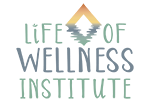
The Viniyoga Path: The Art of Adapting Yoga to Every Body, Every Stage, Every Student
Imagine unrolling your mat to discover not just poses, but a living dialogue between breath, body, and being. This is Viniyoga—an ancient yet urgently relevant approach where yoga molds itself to the human, not the other way around.
Experience for yourself how breath and movement transform both practice and teaching. Our teachers guide you through this alchemy: the moment when āsana becomes not just physical exercise, but a tool for managing your physical, physiological, and mental-emotional self.
What is Viniyoga?
The Sanskrit term Viniyoga (from vi + ni + yoga) means differentiation, adaptation, and appropriate application. As Patañjali teaches in Yoga Sūtra III.6: tasya bhūmiṣu viniyogaḥ — Its application is by stages.
This is yoga as Krishnamacharya and T.K.V. Desikachar intended: a comprehensive transmission of āsana, prāṇāyāma, bandha, sound, meditation, and sacred study—tailored to the individual.
We use the term Viniyoga to describe an approach that:
Adapts practices to each person’s condition, needs, and interests
Provides tools for self-discovery and personal transformation
Honors that a teen, a stressed parent, and a senior need fundamentally different practices
The Four Pillars of ViniYoga Teaching
Four principles you’ll embody in your practice and teaching:
1. Function Over Form
When a student struggles in downward dog, most teachers correct their alignment. Viniyoga teachers ask: What is this pose meant to do for them today? Is it to:
Create space in a stiff spine?
Calm an overactive nervous system?
Build shoulder stability after injury?
You’ll learn to adapt postures based on their purpose, not their appearance.
2. Breath as the Guiding Force
The same breath that energizes a morning practice might overwhelm someone with anxiety. Through our training, you’ll discover how:
Rhythmic breathing rewires stress responses
Extended exhales release held trauma in the tissues
Strategic ratios prepare the mind for meditation
These aren’t theories—they’re tools you’ll apply immediately.
3. The Dance of Repetition & Stay
Repetition warms the body like kindling before a fire; stay allows the flame of awareness to catch. You’ll learn:
When repeating a movement builds trust in stiff joints
How holding a posture reveals hidden holding patterns
Why transitioning between them regulates the nervous system
4. Sequencing as Sacred Conversation
A Viniyoga sequence listens before it speaks. You’ll craft practices that:
Begin by meeting the student’s current state (agitated? exhausted?)
Progress through postures chosen like words in a poem
Culminate in moments of integration
“During the early part of life, learning yoga as a physical art form is most beneficial for the self-confidence and discipline it instills. In middle age, yoga should focus on physical therapy and maintaining optimum health as far into life as possible. In the last stages of life, the practitioner will be ready to focus on the ultimate goal of yoga--true understanding of the philosophy behind it and the realization of truth.”
Srivatsa Ramaswami from the book Yoga for the Three Stages of Life
Honoring Life's Chapters
Srivatsa Ramaswami, Krishnamacharya’s student, illuminates yoga’s journey through life:
“Early in life, yoga builds confidence; in middle age, it sustains health; later, it deepens into philosophy.”
Our training prepares you to serve each stage:
Youth: Guiding teens toward body awareness without dogma
Adulthood: Adapting for stress, injury, or parenthood
Later Years: Offering practices that honor changing mobility
This wisdom lives in our graduates, like the teacher who helped a retired dancer rediscover grace through chair yoga, or the one who guides new mothers in postpartum recovery.
A Lineage of Embodied Wisdom
Krishnamacharya and Desikachar didn’t teach poses—they taught how to see. Their legacy lives in our:
Commitment to observation (not prescription)
Respect for individuality (no rigid methodologies)
Integration of ancient and modern (sutras meet neuroscience)
This is why our graduates don’t just teach—they facilitate lasting change.
Why This Training?
In a world of cookie-cutter certifications, we offer:
Skills studios actively seek (adaptation over memorization)
Confidence to work with anyone (athletes, trauma survivors, seniors)
A foundation that deepens for decades
Our graduates say:
“This training changed how I see every student.” —Alex Pattinson
“I feel equipped to support clients with compassion, not just cues.” —Alyssa G.
“I would recommend this course to EVERYONE!! Even if they don’t want to teach yoga or know anything about yoga. The knowledge and support you will gain from Mel will change your life!!
I am filled with more confidence, and my flame has been reignited! I believe I can change my life and my career and help support others in their own healing.” – Cori Williams.
“This training was detailed, trauma-informed, and person-centered. Melanie holds space for her students and encourages them to find answers within themselves. Her warm energy and nonjudgmental approach gave me the tools to care for myself—which in turn helps me care for others. I feel ready to teach and provide a safe environment for all.” – Alex Pattinson
“Trauma-informed yoga gets to the heart of what yoga is meant to be. I wanted training that aligned with my values—from our first call, I knew this was it. Melanie facilitates a beautiful online space where I never felt like I was missing out, no matter where in the world I was.”— Mary Whiteside
“I feel equipped to support clients with intention, compassion, and clarity—not just as a teacher, but in my own healing. This training clarified my dharma: how to serve others while honoring my wellness. The community we built is lifelong. Learning from Mel has been an honor I’ll carry forever.”—Alyssa G
Is This Your Path?
This training is for those ready to:
Teach people, not just poses
Honor tradition while serving modern needs
Develop skills that outlast trends
The difference isn’t in what you’ll teach—but in how you’ll see.
